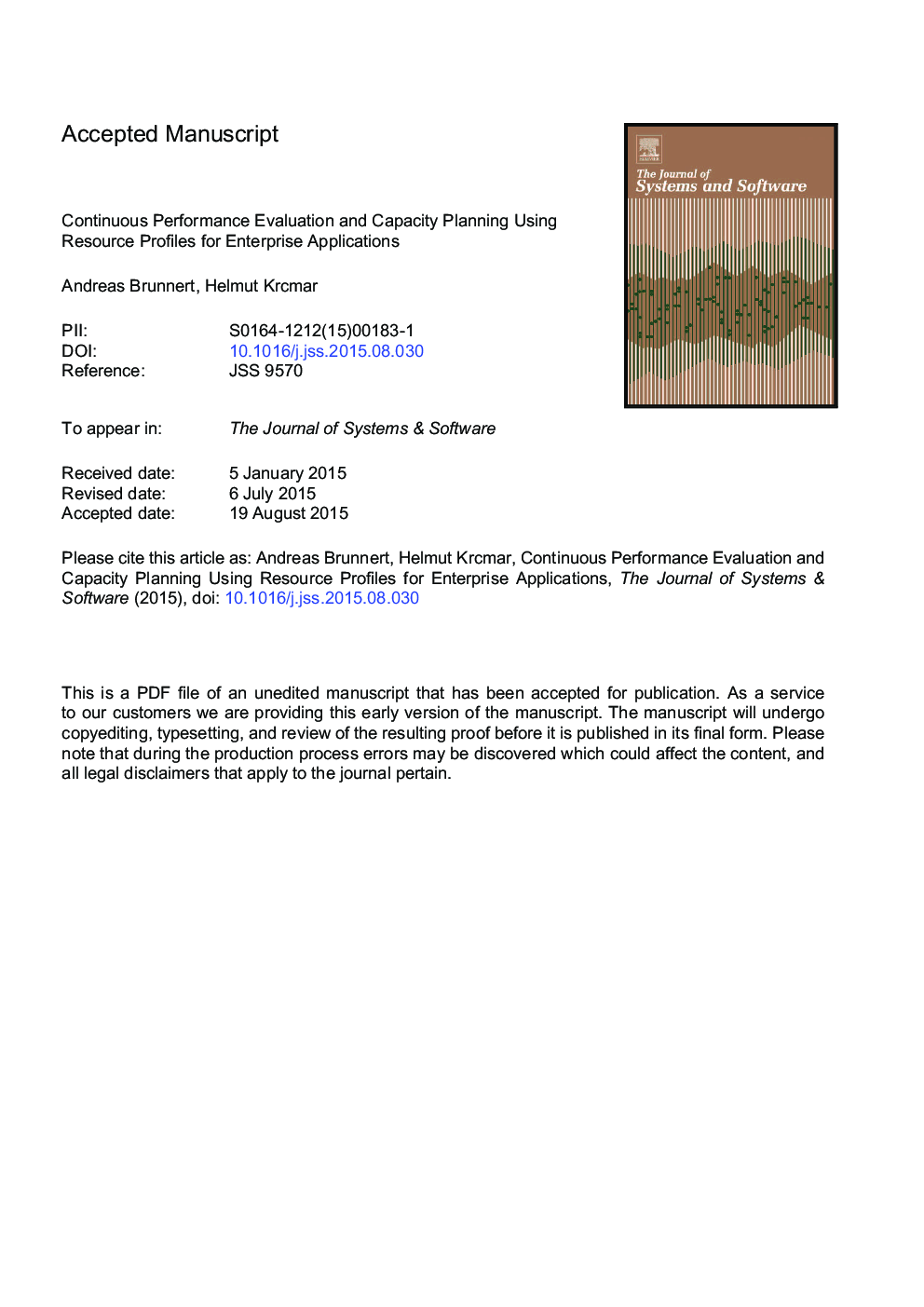| Article ID | Journal | Published Year | Pages | File Type |
|---|---|---|---|---|
| 4956618 | Journal of Systems and Software | 2017 | 76 Pages |
Abstract
Continuous delivery (CD) is a software release process that helps to make features and bug fixes rapidly available in new enterprise application (EA) versions. Evaluating the performance of each EA version in a CD process requires a test environment comparable to a production system. Maintaining such systems is labor intensive and expensive. If multiple deployments of the same EA exist, it is often not feasible to maintain test instances for all of these systems. Furthermore, not all deployments are known at the time of a release (e.g., for off-the-shelf products). To address these challenges, this work proposes the use of resource profiles which describe the resource demand per transaction for each component of an EA and allow for performance predictions for different hardware environments and workloads without the need to own corresponding test environments. Within a CD process, resource profiles can be used to detect performance changes in EA versions. Once a version is released, resource profiles can be distributed along with the application binaries to support capacity planning for new deployments. Three integrated experiments for a representative EA provide validation for these capabilities.
Related Topics
Physical Sciences and Engineering
Computer Science
Computer Networks and Communications
Authors
Andreas Brunnert, Helmut Krcmar,
